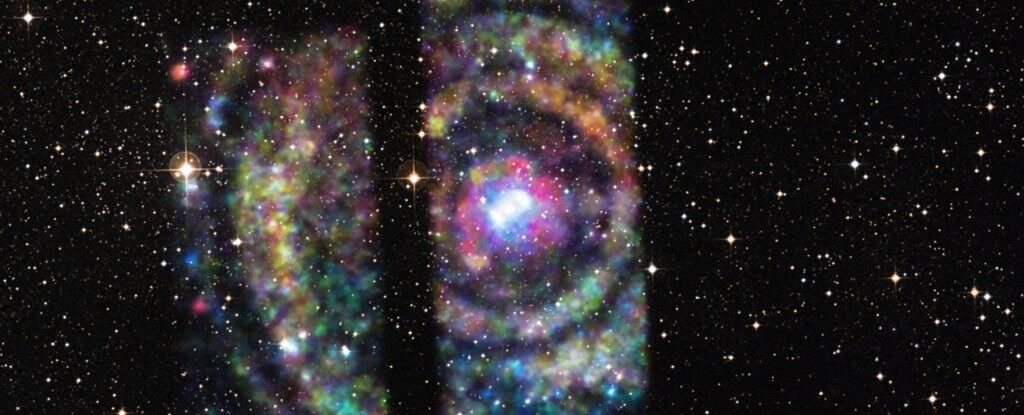
Fast radio bursts (FRB) are one of the most enigmatic mysteries in the Universe. Despite the fact that the absolute nature of all FRB astronomers still unknown, scientists seem to finally have found out what an amazing environment were some of the most discussed recent FRB. We are talking about recurring signals FRB 121102.
For the first time about signals FRB 121102, the researchers began in November 2012, but in order to narrow down their unusual nature, the scientists took several years. Most fast radio bursts, usually seen only once, which made the computation of their source impossible task, however, the feature of FRB 121102 was the fact that these signals are repeated.
This gave scientists a unique opportunity to study these signals. FRB represent the impulses lasting a few milliseconds, but sometimes has the energy of 500 million suns. Since most of these radio pulses is not repeated, and predicting them becomes nearly impossible. As, however, and to trace their source. That is why scientists still could not determine their true nature.
Signals FRB 121102 never ceased to amaze researchers for several years. In March 2016, astronomers announced the discovery in archival data of the telescope information about 10 fast radio bursts from the same region. In December 2016 was discovered 6 signals FRB 121102, and in August 2017 — 15. This allowed the scientists to determine the location of the source of these signals. They found zvezdoobrazovaniya region one dwarf galaxy located more than three billion light years from Earth.
An international team of researchers studying data from different radio telescopes, were able to further narrow it down and eventually come to one conclusion. Scientists are more confident than ever that the source of FRB 121102 is a neutron star. And apparently, this star is located in extreme environment, or very close to the black hole, or inside a very powerful nebula. This is the conclusion of researchers was prompted by the fact that these radio signals were “twisted”.
On its work to the specialists shared in the journal Nature, which reported that the signals FRB 121102 was almost completely polarized. When these polarized signals pass through a magnetic field, they spin, and the stronger this magnetic field, the stronger they are twisted. This feature is called the Faraday effect and allows researchers to learn more about the nature of certain waves. In the case of signals FRB 121102 their polarization plane turned out to be the most twisted ever observed, which suggests that they went through a very powerful magnetic field.
“The only known in our galaxy, sources that have the same as FRB 121102, twist the plane of polarization is located in the galactic centre and located in a very dynamic region near a massive black hole. It is possible that the FRB 121102 is located in similar environments in the galaxy,” says Daniel Micelli from the University of Amsterdam.
“Also, the feature of the twisted plane of polarization can be explained if the source is a very powerful nebula left over after a supernova explosion,” adds the scientist.
Observation explains the role of the neutron star. It is believed that these objects are the result of supernova explosions of stars. If star mass is above a certain value, instead of the supernova she turns into a black hole.
Neutron stars are very small and very dense objects. And upon rotation they emit radio pulses. A certain type of neutron stars called magnetosome, has an extremely powerful magnetic field and is able to create emissions – similar to how the Sun produces solar flares. They were also considered by scientists as a possible source of fast radio pulses, however, observations have shown that the most powerful bursts of these objects was four orders of magnitude lower in power than FRB 121102. In the end, scientists came to the conclusion that the source of FRB 121102 is a common type of neutron star. At the same time, the researchers plan to continue their work and will try more to figure out in what environment they came from.
“We will continue observing and watch how changes over time of the properties of these bursts. Through these observations we try to figure out which of the assumptions was correct – the neutron star is near a black hole, or it is inside a very powerful nebula,” says Jason Hessels from the same University of Amsterdam.
At the same time, we still don’t know what is the source of a dozen other observed radio bursts. They are not repeated, as was the case with FRB 121102, so scientists suggest that FRB 121102 may be unique in its kind, while others may have other sources.
Astronomers have found one of the sources of mysterious radio signals
Nikolai Khizhnyak